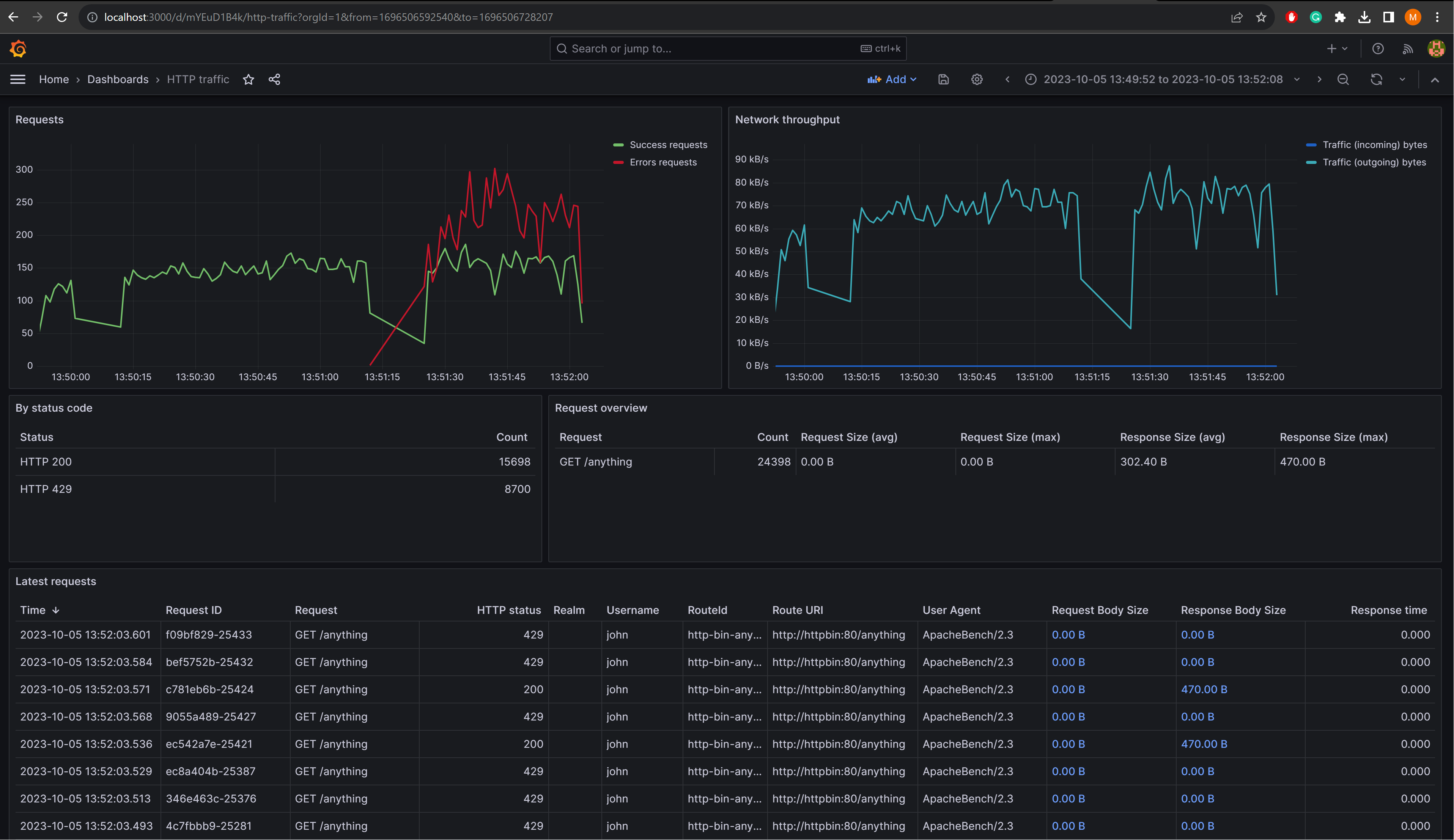A Docker-packaged reverse proxy built on top of Spring Cloud Gateway with full request/response (including body) logging.
In the docker folder there is a docker-compose.yaml example that brings up Grafana on port 3000, and the gateway
on port 6464.
NOTE: For more information on how to configure, se the sections below. The main config file is
in config/application.yaml
Starting the services:
docker-compose up -dGenerate some traffic:
curl -uuser:pass http://localhost:6464/getView the results in Grafana by going to http://localhost:3000/. The default username/password is admin/grafana. Show
the dashboard by picking the dashboard named HTTP traffic from the left-hand menu.
One of the strong points of this project is the logging and ability to view and analyze traffic. Below is a quick guide to configuring logging.
- File - log to file via template-pattern for ease of setup.
- ClickHouse - Log to a clickhouse table for powerful and easy analysis.
http-logging:
provider:
file:
enabled: true
pattern: '{{gateway_request_id}} {{method}} {{path}} {{request_headers["Content-Length"][0]}} {{status}}'
clickhouse:
enabled: true
url: jdbc:ch://localhost:18123?database=default&async_insert=1,wait_for_async_insert=0NOTE: The file log appender can be configured with the logger name access_log.
Normally the request is not (fully) consumed by the load balancer/reverse-proxy/gateway, thus the request contents are lost. The request can still be captured by configuring a fallback for the route, as described below:
spring:
cloud:
gateway:
routes:
- id: my-upstream-is-down
uri: http://my-service1
predicates:
- Path=/my-service
filters:
- name: CircuitBreaker
args:
name: upstream-down
fallbackUri: forward:/upstream-downIt supports regexp named parameters, otherwise you can also use numeric variables like {{1}} and {{2}}. You also have access to query paramters via query
Example shorthand:
filters:
- TemplateRedirect=/foo/(?<var1>.*)/21/(?<var2>.*),https://example.com/{{var2}}?={{var1}},302Example full:
filters:
- name: TemplateRedirect
source: /foo/(?<var1>.*)/21/(?<var2>.*)
target: https://example.com/{{var2}}?={{var1}}
status: 301 # default is 302Allows the injection of basic auth credentials before forwarding the request upstream
filters:
- name: InjectBasicAuth
args:
username: ${SECRET_USERNAME}
password: ${SECRET_PASSWORD}Negated version of Path.
- NotPath=/secretNegated version of Method.
- NotMethod=GETNegated version of Host.
- NotHost=sub.example.comWithout any listed extension, it will skip all URLs ending with an extension.
Example config for not logging anything with an extension (like file.js, file.css, etc.):
- NotExtension=Example config fo skipping specific extensions. Other extensions like file.zip would still be let through:
- NotExtension=html,css,js